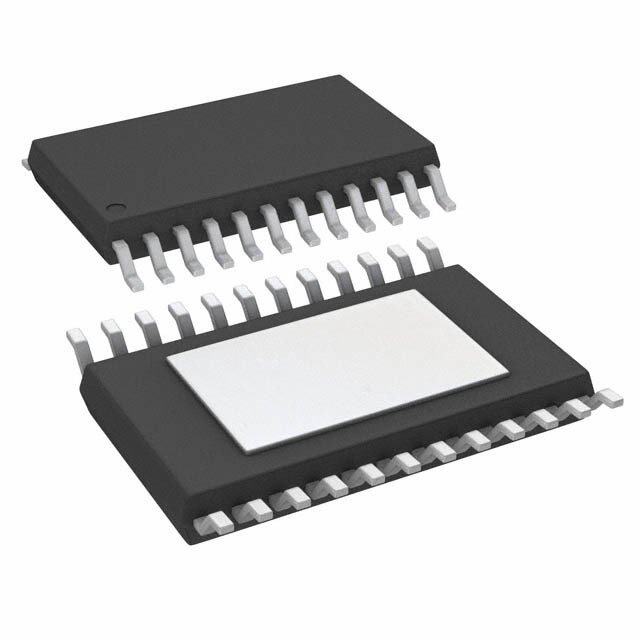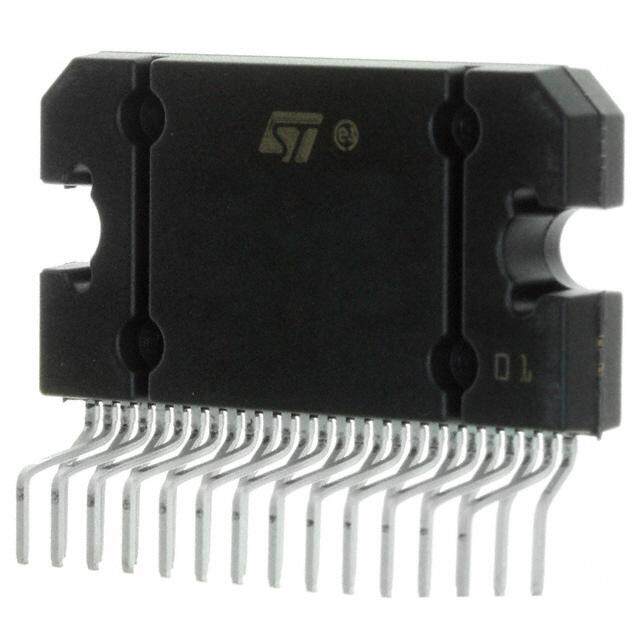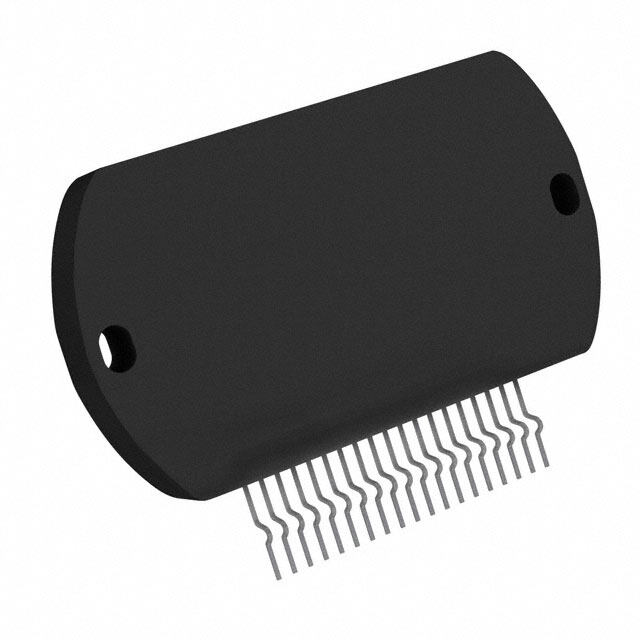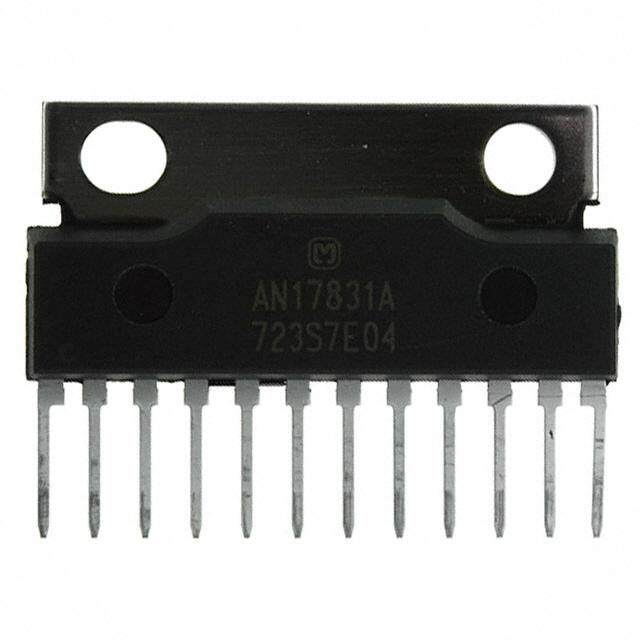ICGOO在线商城 > 集成电路(IC) > 线性 - 音頻放大器 > NAU8223YG
- 型号: NAU8223YG
- 制造商: Nuvoton Technology Corporation of America
- 库位|库存: xxxx|xxxx
- 要求:
| 数量阶梯 | 香港交货 | 国内含税 |
| +xxxx | $xxxx | ¥xxxx |
查看当月历史价格
查看今年历史价格
NAU8223YG产品简介:
ICGOO电子元器件商城为您提供NAU8223YG由Nuvoton Technology Corporation of America设计生产,在icgoo商城现货销售,并且可以通过原厂、代理商等渠道进行代购。 NAU8223YG价格参考。Nuvoton Technology Corporation of AmericaNAU8223YG封装/规格:线性 - 音頻放大器, Amplifier IC 2-Channel (Stereo) Class D 20-QFN (4x4)。您可以下载NAU8223YG参考资料、Datasheet数据手册功能说明书,资料中有NAU8223YG 详细功能的应用电路图电压和使用方法及教程。
| 参数 | 数值 |
| 产品目录 | 集成电路 (IC) |
| 描述 | IC AMP AUDIO 3W CLASS D 20QFN |
| 产品分类 | |
| 品牌 | Nuvoton Technology Corporation of America |
| 数据手册 | https://download.nuvoton.com/NuvotonMOSS/DownloadService/Member/DocumentsInfo.aspx?tp_GUID=DA00-NAU8223%20%20 |
| 产品图片 |
|
| 产品型号 | NAU8223YG |
| PCN组件/产地 | |
| rohs | 无铅 / 符合限制有害物质指令(RoHS)规范要求 |
| 产品系列 | - |
| 不同负载时的最大输出功率x通道数 | 3.1W x 2 @ 4 欧姆 |
| 供应商器件封装 | 20-QFN(4x4) |
| 包装 | 托盘 |
| 安装类型 | 表面贴装 |
| 封装/外壳 | 20-QFN |
| 标准包装 | 56 |
| 特性 | 消除爆音,待机,热保护 |
| 电压-电源 | 2.5 V ~ 5.5 V |
| 类型 | D 类 |
| 输出类型 | 2 通道(立体声) |








- 商务部:美国ITC正式对集成电路等产品启动337调查
- 曝三星4nm工艺存在良率问题 高通将骁龙8 Gen1或转产台积电
- 太阳诱电将投资9.5亿元在常州建新厂生产MLCC 预计2023年完工
- 英特尔发布欧洲新工厂建设计划 深化IDM 2.0 战略
- 台积电先进制程称霸业界 有大客户加持明年业绩稳了
- 达到5530亿美元!SIA预计今年全球半导体销售额将创下新高
- 英特尔拟将自动驾驶子公司Mobileye上市 估值或超500亿美元
- 三星加码芯片和SET,合并消费电子和移动部门,撤换高东真等 CEO
- 三星电子宣布重大人事变动 还合并消费电子和移动部门
- 海关总署:前11个月进口集成电路产品价值2.52万亿元 增长14.8%







PDF Datasheet 数据手册内容提取
NAU8223 3.1W Stereo Filter-Free Class-D Audio Amplifier 1 Description The NAU8223 is a stereo high efficiency filter-free Class-D audio amplifier, which is capable of driving a 4Ω load with up to 3.1W output power. This device provides chip enable pin with extremely low standby current and fast start-up time of 3.4ms. It has five selectable gain settings (i.e. 0dB, 6dB, 12dB, 18dB and 24dB), which can be controlled by a single gain pin. The NAU8223 is ideal for the portable applications of battery drive, as it has advanced features like 87dB PSRR, 91% efficiency, ultra low quiescent current (i.e. 2.1mA at 3.7V for 2 channels) and superior EMI performance. It has the ability to configure the inputs in either single-ended or differential mode. NAU8223 is available in Miniature QFN-20 package and TSSOP-20 package. Key Features (cid:1) Low Quiescent Current: • 2.1mA at 3.7V for 2 channels • 3.2mA at 5V for 2 channels (cid:1) 5 Selectable Gain Settings: • 0dB / 6dB / 12dB / 18dB / 24dB (cid:1) Powerful Stereo Class-D Amplifier: • 2ch x 3.1W (4Ω @ 5V, 10% THD+N) • 2ch x 1.26W (4Ω @ 3.7V, 1% THD+N) • 2ch x 1.76W (8Ω @ 5V, 10% THD+N) • 2ch x 0.76W (8Ω @ 3.7V, 1% THD+N) (cid:1) Low Output Noise: 20 µV @0dB gain (cid:1) 87dB PSRR @217Hz RMS Applications (cid:1) Low Current Shutdown Mode (cid:1) Notebooks / Tablet PCs (cid:1) Click-and Pop Suppression (cid:1) Personal Media Players / Portable TVs (cid:1) MP3 Players (cid:1) Portable Game Players (cid:1) Digital Camcorders Figure 1: NAU8223Block Diagram NAU8223 Datasheet Rev 1.3 Page 1 of 23 July, 2012
2 Pinout 2.1 NAU8223 QFN 20 (TOP VIEW) NAU8223Datasheet Rev 1.4 Page 2 of 23 August, 2013
2.2 TSSOP 20 (TOP VIEW) Part Number Dimension Package Package Material NAU8223YG 4mm x 4mm QFN-20 Pb-Free NAU8223WG 4.4mm x 6.5mm TSSOP-20 Pb-Free NAU8223Datasheet Rev 1.4 Page 3 of 23 August, 2013
3 Pin Descriptions QFN TSSOP Name Type Functionality 1 9 OUTRP Analog Output Right Channel Positive BTL Output 2 10 VDD Supply Power Supply 3 11 NC NC No Connect 4 12 EN Digital Input Chip Enable (High = Enable; Low = PD) 5 13 INR Analog Input Right Channel Negative Input 6 14 IPR Analog Input Right Channel Positive Input 7 15 GS Analog Input 5 Selectable Gain Setting (0dB / 6dB / 12dB / 18dB / 24dB) 8 16 VDD Supply Power Supply 9 17 VSS Supply Ground 10 18 IPL Analog Input Left Channel Positive Input 11 19 INL Analog Input Left Channel Negative Input 12 20 NC NC No Connect 13 1 NC NC No Connect 14 2 VDD Supply Power Supply 15 3 OUTLP Analog Output Left Channel Positive BTL Output 16 4 VSS Supply Ground 17 5 OUTLN Analog Output Left Channel Negative BTL Output 18 6 VDD Supply Power Supply 19 7 OUTRN Analog Output Right Channel Negative BTL Output 20 8 VSS Supply Ground 21 - Ex-Pad Analog Input Thermal Tab (must be connected to VSS, QFN-20 package, only) Notes 1. Pins designated as NC (Not Internally Connected) should be left as no-connection Table 1: NAU8223 Pin description NAU8223Datasheet Rev 1.4 Page 4 of 23 August, 2013
4 Electrical Characteristics Conditions: EN = VDD = 5V, VSS = 0V, Av = 12dB Z = ∞, Bandwidth = 20Hz to 22kHz, T = 25 oC L A Parameter Symbol Comments/Conditions Min Typ Max Units Power Delivered Z = 4Ω + 33µH VDD = 5.0V 3.1 L THD + N = 10% VDD = 3.7V 1.57 Z = 4Ω + 33µH VDD = 5.0V 2.46 L Output Power THD + N = 1% VDD = 3.7V 1.26 P W (per channel) out Z = 8Ω + 68µH VDD = 5.0V 1.76 L THD + N = 10% VDD = 3.7V 0.95 Z = 8Ω + 68µH VDD = 5.0V 1.41 L THD + N = 1% VDD = 3.7V 0.76 Parameter Symbol Comments/Conditions Min Typ Max Units Chip Enable (EN) Voltage Enable High V VDD = 2.5V to 5.5V 1.4 V EN_H Voltage Enable Low V VDD = 2.5V to 5.5V 0.4 V EN_L Input Leakage Current -1 +1 µA Thermal and Current Protection Thermal Shutdown Temperature 130 oC Thermal Shutdown Hysteresis 15 oC Short circuit Threshold I 2.1 A LIMIT Gain Setting Tie GS to VSS 24 GS Connect VSS through 18 100k ± 5% Voltage Gain A Tie GS pin to VDD 12 dB V GS Connect VDD 6 through 100k ± 5% Floating Node 0 A = 24dB 35 V A = 18dB 70 V Differential Input Resistance R A = 12dB 140 kΩ IN V A = 6dB 280 V A = 0dB 558 V NAU8223Datasheet Rev 1.4 Page 5 of 23 August, 2013
Electrical Characteristics (continued) Conditions: EN = VDD = 5V, VSS = 0V, Av = 12dB, Z = ∞, Bandwidth = 20Hz to 22kHz, T = 25 oC L A Parameter Symbol Comments/Conditions Min Typ Max Units Normal Operation VDD = 3.7V 2.1 mA Quiescent Current Consumption I QUI VDD = 5V 3.17 mA Shut Down Current I EN = 0 0.1 µA OFF Oscillator Frequency f 300 kHz OSC Efficiency η 91 % Start Up Time T 3.4 msec start Output Offset Voltage V ±1 ±4 mV OS Common Mode Rejection Ratio CMRR f = 1kHz 80 dB IN Into Shutdown (Z =8Ω) -72 Click-and-Pop Suppression L dBV A Weighted DC VDD = 2.5V to 5.5V 98 dB PSRR AC V = 87 dB RIPPLE PSRR* 0.2Vpp@217Hz** Power Supply Rejection Ratio V = 0.2Vpp@1KHz 74 RIPPLE V = 54 RIPPLE 0.2Vpp@10KHz f = 1kHz, Channel Crosstalk IN -101 dB Z = 8Ω + 68µH L *Measured with 0.1uF capacitor on V and Battery supply ** Measured with 2.2uF input capacitor. DD Parameter Symbol Comments/Conditions Min Typ Max Units Noise Performance Av = 0dB (A-weighted) 20 Av = 6dB (A-weighted) 21 Av = 12dB (A-weighted) 27 µV RMS Av = 18dB (A-weighted) 36 Av = 24dB (A-weighted) 52 The following setup is used to measure the above parameters NAU8223Datasheet Rev 1.4 Page 6 of 23 August, 2013
Absolute Maximum Ratings Condition Min Max Units Analog supply -0.50 +5.50 V Industrial operating temperature -40 +85 °C Storage temperature range -65 +150 °C CAUTION: Do not operate at or near the maximum ratings listed for extended periods of time. Exposure to such conditions may adversely influence product reliability and result in failures not covered by warranty. Operating Conditions Condition Symbol Min Typical Max Units Analog supply range VDD 2.50 3.7 5.50 V Ground VSS 0 V NAU8223Datasheet Rev 1.4 Page 7 of 23 August, 2013
6 Special Feature Description The NAU8223 offers excellent quantity performance as high efficiency, high output power and low quiescent current. It also provides the following special features. 6.1 Gain Setting The NAU8223 has a GS pin, which can control five selectable gain settings (i.e. 0dB / 6dB / 12dB / 18dB / 24dB). GS Pin Configuration Internal Gain (dB) GS tie to VSS 24 GS connect to VSS through 18 100kΩ ± 5% resistor GS tie to VDD 12 GS connect to VDD through 6 100kΩ ± 5% resistor Floating (open node) 0 6.2 Device Protection The NAU8223 includes device protection for three operating scenarios. They are 1. Thermal Overload 2. Short circuit 3. Supply under voltage 6.2.1 Thermal Overload Protection When the device internal junction temperature reaches 130°C, the NAU8223 will disable the output drivers. When the device cools down and a safe operating temperature of 115°C has been reached for at least about 47mSec, the output drivers will be enabled again. 6.2.2 Short Circuit Protection If a short circuit is detected on any of the pull-up or pull-down devices on the output drivers for at least 14uSec, the output drivers will be disabled for 47mSec. The output drivers will then be enabled again and check for the short circuit. If the short circuit is still present, the output drivers are disabled after 14uSec. This cycle will continue until the short circuit is removed. The short circuit threshold is set at 2.1A. 6.2.3 Supply under Voltage Protection If the supply voltage drops under 2.1V, the output drivers will be disabled while the NAU8223 control circuitry still operates. This will avoid the battery supply to drag down too low before the host processor can safely shut down the devices on the system. If the supply drops further below 1.0v the internal power on reset activated and puts the entire device in power down state. NAU8223Datasheet Rev 1.4 Page 8 of 23 August, 2013
6.3 Power up and Power down Control When the supply voltage ramps up, the internal power on reset circuit gets triggered. At this time all internal circuits will be set to power down state. The device can be enabled by setting the EN pin high. Upon setting the EN pin high, the device will go through an internal power up sequence in order to minimize ‘pops’ on the speaker output. The complete power up sequence will take about 3.4mSec. The device will power down in about 30uSec, when the EN pin is set low. It is important to keep the input signal at zero amplitude or enable the mute condition in order to minimize the ‘pops’ when the EN pin is toggled. . NAU8223Datasheet Rev 1.4 Page 9 of 23 August, 2013
7 Typical Operating Characteristics Conditions: EN = V = 5V, VSS = 0V, Av = 12dB, Z = ∞, Bandwidth = 20Hz to 22kHz, T = 25 oC, unless otherwise DD L A noted Efficiency Vs Output Power Efficiency Vs Output Power (V = 5.0V) (V = 3.7V) DD DD 100 100 90 90 80 80 70 70 %) ZL=4Ω+33uH %)60 Efficiency( 34560000 ZL=8Ω+68uH Efficiency(345000 ZZLL==48ΩΩ+ + 3638uuHH 20 20 10 10 0 0 0 1 2 3 4 0 0.5 1 1.5 2 Output Power(W) Output Power(W) THD+N vs Frequency THD+N vs Frequency (V = 3.7V, ZL= 8Ω+ 68uH) DD (V = 4.2V, ZL= 8Ω+ 68uH) DD 1 1 Pout 0.2W Pout 0.2W Pout 0.4W Pout 0.6W %) 0.1 %) 0.1 N( N( D+ D+ TH0.01 TH0.01 0.001 0.001 20 200 2000 20000 20 200 2000 20000 Frequency(Hz) Frequency(Hz) NAU8223Datasheet Rev 1.4 Page 10 of 23 August, 2013
THD+N vs Frequency THD+N vs Pout (VDD= 5V, ZL= 8Ω+ 68uH) (VDD= 3.7V, ZL = 8Ω+ 68uH) 1 100 f 100Hz Pout 0.2W 10 f 1kHz 0.1 Pout 1.2W f 6kHz %) %) 1 N( ( + N D + TH0.01 HD 0.1 T 0.01 0.001 0.001 20 200 2000 20000 0 0.5 1 1.5 Frequency(Hz) Pout (W) THD+N vs Pout THD+N vs Pout (V = 4.2V, ZL= 8Ω+ 68uH) (V = 5V, ZL=8Ω+ 68uH) DD DD 100 100 10 10 %) 1 %) 1 N ( f 100Hz N ( + + HD 0.1 f 1kHz HD 0.1 f 100Hz T f 6kHz T f 1kHz f 6kHz 0.01 0.01 0.001 0.001 0 0.5 1 1.5 2 0 1 2 3 Pout (W) Pout (W) NAU8223Datasheet Rev 1.4 Page 11 of 23 August, 2013
THD+N vs Frequency THD+N vs Frequency (V = 3.7V, ZL= 4Ω+ 33uH) (V = 4.2V, ZL= 4Ω+ 33uH) DD DD 1 1 Pout 0.2W Pout 0.8W Pout 0.2W 0.1 0.1 Pout 1W ) % ) % ( N ( + N D + H D T H 0.01 T 0.01 0.001 0.001 20 200 2000 20000 20 200 2000 20000 Frequency(Hz) Frequency(Hz) THD+N vs Frequency THD+N vs Pout ) (V = 5V, ZL= 4Ω+ 33uH (V = 3.7V, ZL= 4Ω+ 33uH) DD DD 1 100 Pout 1.5W 10 Pout 2W 0.1 %) %) 1 N( N ( + + D D f = 100Hz H H 0.1 T0.01 T f = 1kHz f = 6kHz 0.01 0.001 0.001 20 200 2000 20000 0 1 2 3 Frequency (Hz) Pout (W) NAU8223Datasheet Rev 1.4 Page 12 of 23 August, 2013
THD+N vs Pout THD+N vs Pout (V = 4.2V, ZL= 4Ω+ 33uH) (V = 5V, ZL= 4Ω+ 33uH) DD DD 100 100 10 10 %) 1 %) 1 N ( N ( + f = 100Hz + HD 0.1 f = 1kHz HD 0.1 T T f = 100Hz f = 6kHz f = 1kHz 0.01 0.01 f = 6kHz 0.001 0.001 0 1 2 3 4 0 1 2 3 Pout (W) Pout (W) Gain 0dB Gain vs Frequency Gain 6dB Crosstalk vs Frequency Gain 12dB 30 Gain 18dB 0 Gain 24dB Left to Right 25 -20 Right to Left 20 -40 ) 15 B) B d n (d 10 el ( -60 Gai 5 Lev -80 0 -100 -5 -10 -120 20 200 2000 20000 20 200 2000 20000 Frequency (Hz) Frequency (Hz) NAU8223Datasheet Rev 1.4 Page 13 of 23 August, 2013
AC PSRR vs Supply Voltage AC PSRR vs Frequency 0 0 -10 -10 -20 -20 -30 PSRR @Gain 0dB, 1KHz -30 PSRR @ Gain 0dB B) -40 B) -40 d d R ( -50 R ( -50 SR -60 SR -60 P P -70 -70 -80 -80 -90 -90 -100 -100 2.5 3.5 4.5 5.5 6.5 20 200 2000 20000 Supply Voltage (V) Frequency (Hz) NAU8223Datasheet Rev 1.4 Page 14 of 23 August, 2013
SupplyVoltage vs SupplyCurrent 3.5 3 2.5 ) A m 2 ( t n e rr 1.5 u C y pl 1 p u S 0.5 0 2.5 3.5 4.5 5.5 Supply Voltage (V) NAU8223Datasheet Rev 1.4 Page 15 of 23 August, 2013
8 Application Information 8.1 Application diagram 20VSS19UTRN18VDD17UTLN16 VSS O O 1 OUTRP OUTLP 15 2 VDD VDD 14 NAU8223 3 NC Stereo Class DNC 13 QFN 20-Pin 4 EN NC 12 5 INR INL 11 6 PR7GS8DD9 SS10PL I V V I P.S. GS Pin – The 100kΩ resistors are optional. GS can be floating for internal gain setting = 0dB. Please refer Section 2.1 (Gain Setting) for the detailed explanation. NAU8223Datasheet Rev 1.4 Page 16 of 23 August, 2013
8.2 Component selection Coupling Capacitors An ac coupling capacitor (Cin) is used to block the dc content from the input source. The input resistance of the amplifier (Rin) together with the Cin will act as a high pass filter. So depending on the required cut off frequency the Cin can be calculated by using the following formula Where is the desired cut off frequency of the High pass filter. Input Cin Amplifier Output Rin(Input Resistance) Bypass Capacitors Bypass capacitors are required to remove the ac ripple on the VDD pins. The value of these capacitors depends on the length of the VDD trace. In most cases, 10uF and 0.1uF are enough to get the good performance. 8.3 Layout considerations The NAU8223 QFN package uses an exposed pad on the bottom side of the package to dissipate excess power from the output drivers. This pad must be soldered carefully to the PCB for proper operation of the NAU8223. This pad is internally connected to Vss. A typical layout is shown below. NAU8223Datasheet Rev 1.4 Page 17 of 23 August, 2013
The PCB has to be designed in such a manner that it should have nine vias in 3x3 grid under NAU8223. The vias should have hole size of 12mil and a spacing of 30mils. The pad size of the vias is 24mils. The vias on the top side of the board should be connected with a copper pour that has an area of 2mm x 2mm, centered underneath the NAU8223. The nine vias should connect to copper pour area on the bottom of the PCB. It is preferred to pour the complete bottom side of the board with Vss. Also good PCB layout and grounding techniques are essential to get the good audio performance. It is better to use low resistance traces as these devices are driving low impedance loads. The resistance of the traces has a significant effect on the output power delivered to the load. In order to dissipate more heat, use wide traces for the power and ground lines. 8.4 Class D without filter The NAU8223 is designed for use without any filter on the output line. That means the outputs can be directly connected to the speaker in the simplest configuration. This type of filter less design is suitable for portable applications where the speaker is very close to the amplifier. In other words, this is preferable in applications where the length of the traces between the speaker and amplifier is short. The following diagram shows this simple configuration. NAU8223 outputs connected to speaker without filter circuit 8.5 Class D with filter In some applications, the shorter trace lengths are not possible because of speaker size limitations and other layout reasons. In these applications, the long traces will cause EMI issues. There are two types of filter circuits available to reduce the EMI effects. These are ferrite bead and LC filters. Ferrite Bead filter The ferrite bead filters are used to reduce the high frequency emissions. The typical circuit diagram is shown in the figure. NAU8223 outputs connected to speaker with Ferrite Bead filter NAU8223Datasheet Rev 1.4 Page 18 of 23 August, 2013
The characteristic of ferrite bead is such that it offers higher impedance at high frequencies. For better EMI performance select ferrite bead which offers highest impedance at high frequencies, so that it will attenuate the signals at higher frequencies. Usually the ferrite beads have low impedance in the audio range, so it will act as a pass through filter in the audio frequency range. LC filter The LC filter is used to suppress the low frequency emissions. The following diagram shows the NAU8223 outputs connected to the speaker with LC filter circuit. R is the resistance of the speaker coil. L NAU8223 outputs connected to speaker with LC filter Standard Low pass LCR filter The following are the equations for the critically damped (ζ = 0.707) standard low pass LCR filter (cid:7) 2(cid:2)(cid:3)(cid:4) (cid:6) (cid:3)(cid:4) is the cutoff frequency √(cid:9)(cid:10)(cid:11)(cid:12) 1 (cid:20) (cid:13) (cid:6)0.707(cid:6) ∗√ 2(cid:18) (cid:21) The L and C values for differential configuration can be calculated by duplicating the single ended configuration values and substituting R = 2R. L NAU8223Datasheet Rev 1.4 Page 19 of 23 August, 2013
8.6 NAU8223 EMI performance The NAU8223 includes a spread spectrum oscillator for reduced EMI. The PWM oscillator frequency typically sweeps in a range of 300 kHz +/- 15 kHz in order to spread the energy of the PWM pulses over a larger frequency band. In addition, slew rate control on the output drivers allows the application of ‘filter less’ loads, while suppressing EMI at high frequencies. The below graph shows the EMI performance of NAU8223 with ferrite beads and speaker cable length of 30cm. NAU8223Datasheet Rev 1.4 Page 20 of 23 August, 2013
9 Package Dimensions 9.1 QFN20L 4X4 MM^2, Pitch:0.50 MM TOP VIEW BOTTOM VIEW 15 11 11 15 10 10 16 16 20 20 6 6 1 5 5 1 NAU8223Datasheet Rev 1.4 Page 21 of 23 August, 2013
9.2 TSSOP20L 4.4X6.5 MM^2, Pitch:0.65 MM NAU8223Datasheet Rev 1.4 Page 22 of 23 August, 2013
10 Ordering Information Nuvoton Part Number Description NAU8223 _G Package Material: G = Pb-free Package Package Type: Y = 20-Pin QFN Package W = 20-Pin TSSOP Package Version History VERSION DATE PAGE DESCRIPTION Preliminary Revision Rev1.0 March, 2012 P.8, P.9 Updated typical characteristics Updated Pin No. Rev1.1 March, 2012 P.2, P.10 Added application diagrams Rev1.2 May, 2012 NA Updated Electrical Characteristics Added Application information section P.4, P.5, Rev1.3 July, 2012 Added/Modified Typical operating Characteristics P.10-P.18 Updated Electrical Characteristics P.4, P.5, Rev1.4 August, 2013 Added TSSOP20 Package information section P.22,P.23 Table 1: Version History Important Notice Nuvoton products are not designed, intended, authorized or warranted for use as components in systems or equipment intended for surgical implantation, atomic energy control instruments, airplane or spaceship instruments, transportation instruments, traffic signal instruments, combustion control instruments, or for other applications intended to support or sustain life. Furthermore, Nuvoton products are not intended for applications wherein failure of Nuvoton products could result or lead to a situation wherein personal injury, death or severe property or environmental damage could occur. Nuvoton customers using or selling these products for use in such applications do so at their own risk and agree to fully indemnify Nuvoton for any damages resulting from such improper use or sales. NAU8223Datasheet Rev 1.4 Page 23 of 23 August, 2013

 Datasheet下载
Datasheet下载

